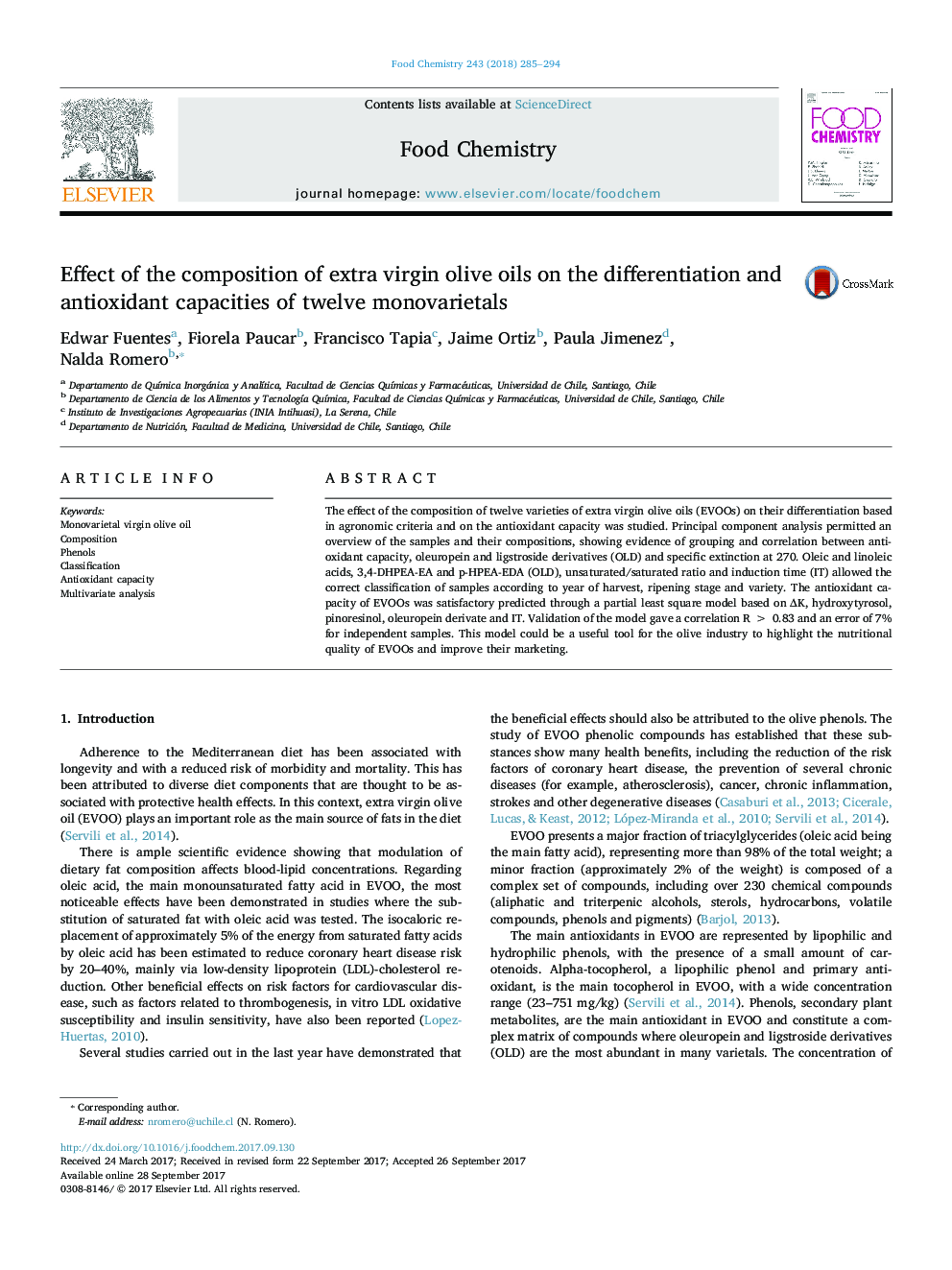| Article ID | Journal | Published Year | Pages | File Type |
|---|---|---|---|---|
| 5132557 | Food Chemistry | 2018 | 10 Pages |
â¢A wide chemical characterization of virgin olive oils grown in north of Chile was accomplished.â¢Chemical composition of virgin olive oils allowed their differentiation based in agronomic criteria.â¢The antioxidant capacity (H-ORACFL) of olive oil was predicted as a function of chemical composition.â¢Chemometrics tools supported the multivariate analysis of samples.
The effect of the composition of twelve varieties of extra virgin olive oils (EVOOs) on their differentiation based in agronomic criteria and on the antioxidant capacity was studied. Principal component analysis permitted an overview of the samples and their compositions, showing evidence of grouping and correlation between antioxidant capacity, oleuropein and ligstroside derivatives (OLD) and specific extinction at 270. Oleic and linoleic acids, 3,4-DHPEA-EA and p-HPEA-EDA (OLD), unsaturated/saturated ratio and induction time (IT) allowed the correct classification of samples according to year of harvest, ripening stage and variety. The antioxidant capacity of EVOOs was satisfactory predicted through a partial least square model based on ÎK, hydroxytyrosol, pinoresinol, oleuropein derivate and IT. Validation of the model gave a correlation RÂ >Â 0.83 and an error of 7% for independent samples. This model could be a useful tool for the olive industry to highlight the nutritional quality of EVOOs and improve their marketing.
